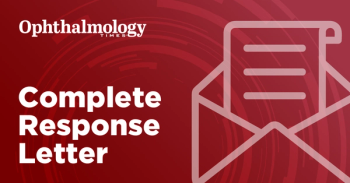
FDA approves faricimab-svoa 6.0 mg single-dose prefilled syringe for use in the treatment of wet AMD, DME and RVO
According to Genentech, faricimab-svoa is the first and only syringe prefilled with an FDA-approved bispecific antibody to treat retinal conditions that can cause blindness.
Genentech announced the FDA has approved faricimab-svoa (Vabysmo) 6.0 mg single-dose prefilled syringe (PFS) for use in the treatment of wet, or neovascular,
The company, a member of the Roche group, noted in its news release that together, these 3 conditions affect close to 3 million people in the US The faricimab-svoa prefilled syringe will become available to US retina specialists and their patients in the coming months. The single-dose prefilled syringe offers the same medication as existing Vabysmo vials, and offers physicians an alternative, ready-to-use option. It will continue to be available in a 6.0 mg vial.1
Levi Garraway, MD, PhD, Genentech’s chief medical officer and head of Global Product Development, noted in the news release that the company was pleased the FDA gave its approval to the Vabysmo PFS for people living with wet AMD, DME and RVO, which are some of the leading causes of vision loss.
“While many retina specialists are already using Vabysmo as a first-line treatment, this new offering should make it even simpler to administer, thereby enhancing the treatment experience for both physicians and patients,” Garraway said in the statement.
According to the company, Vabysmo (faricimab) targets and inhibits two signaling pathways linked to a number of vision-threatening retinal conditions by neutralizing angiopoietin-2 (Ang-2) and vascular endothelial growth factor-A (VEGF-A). While research is underway to better understand the role of the Ang-2 pathway in retinal disease, Ang-2 and VEGF-A are thought to contribute to vision loss by destabilizing blood vessels, which may cause new leaky blood vessels to form and increase inflammation. By blocking pathways involving Ang-2 and VEGF-A, faricimab is designed to stabilize blood vessels.1
The company noted in its news release Vabysmo is the first and only bispecific antibody approved for the eye and has demonstrated rapid and robust vision improvements and retinal drying in wet AMD, DME and RVO. Retinal drying is an important clinical measure, as swelling from excess fluid in the back of the eye is associated with distorted and blurred vision.
To date, Vabysmo is approved in more than 95 countries for wet AMD and DME, and in several countries, including the U.S. and Japan, for RVO. Review by other health authorities across the globe is ongoing. More than four million doses of Vabysmo have been distributed globally since its initial U.S. approval in 2022.1
Reference
1. Genentech: Press Releases | Thursday, Jul 4, 2024. www.gene.com. Accessed July 5, 2024. https://www.gene.com/media/press-releases/15030/2024-07-04/fda-approves-genentechs-vabysmo-prefille
Newsletter
Don’t miss out—get Ophthalmology Times updates on the latest clinical advancements and expert interviews, straight to your inbox.













































